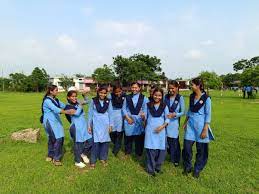18th Annual Status Of Education Report (ASER) 2023:

The 18th Annual Status of Education Report (ASER) 2023 titled ‘Beyond Basics’ was released by NGO Pratham, discussing the activities students are engaged in, their basic and applied reading and maths abilities and digital awareness and skills.
Highlights of the ASER 2023:
- Overall, 86.8% of 14-18-year-olds are enrolled in an educational institution.
- However, there are notable differences visible by age, with 3.9% of 14-year-olds and 32.6% of 18-year-olds not enrolled.
- Most students in the 14-18 age group are enrolled in the Arts/Humanities streams, with more than half (55.7%) in Class XI or higher studying in this stream.
- There are gender differences, with fewer females (28.1%) enrolled in the Science, Technology, Engineering, and Mathematics (STEM) stream compared to males (36.3%).
- Only 5.6% are taking vocational training or related courses. Vocational training is more prevalent among college-level students (16.2%).
- Most youth are taking short duration courses of six months or less.
- About 25% of the youth cannot read a Class II level text fluently in their regional language.
- While females (76%) outperform males (70.9%) in reading a Standard II level text in their regional language, males excel in arithmetic and English reading.
- Only 57.3% can read sentences in English, and of those, almost three-quarters understand their meanings.
- Close to 90% of all youth have a smartphone in the household, and 43.7% of males have their own smartphone compared to 19.8% of females.
- Males generally outperform females in digital tasks, and performance on digital tasks improves with education level and basic reading proficiency.
- Over 50% of students in the 14-18 age group face difficulties with elementary division problems, and around 45% struggle with tasks such as calculating the number of hours a child slept based on bedtime and wake-up time.
- Inadequate foundational numeracy skills hinder youth proficiency in everyday calculations, including budget management, applying discounts, and calculating interest rates or loan repayments.
- Almost 90% of Indian youth have access to a smartphone in their household and know how to use it. This indicates widespread digital connectivity among this demographic.
- There is a significant gender disparity in digital literacy. Girls are reported to be less likely to know how to use a smartphone or computer compared to boys.
- Males (43.7%) were more than twice as likely as girls (19.8%) to own their own smartphone.
- There is a notable gender gap in smartphone ownership, with males being more than twice as likely as females to own their own smartphone.
- Boys outperformed girls across various digital tasks.
- Boys are more familiar with online safety settings compared to girls. This suggests a need for targeted efforts to educate and empower girls in online safety practices.
- About two-thirds used smartphones for educational purposes, such as watching online videos related to studies, solving doubts, or exchanging notes.
- While the survey aimed to assess digital skills using smartphones, not all youth could bring a smartphone with good connectivity.
- Boys were more likely to bring smartphones for the assessment compared to girls, indicating discrepancies in access.
- A quarter of non-enrolled youth reported engaging in educational activities on their smartphones, emphasizing the role of digital devices in supporting learning outside formal educational settings.




